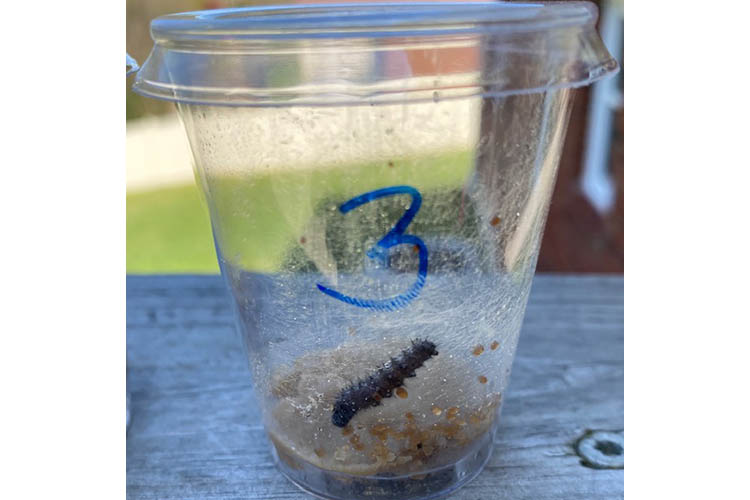4-H agents partnering with teachers on ‘home work’
4-H agents partnering with teachers on ‘home work’

LEXINGTON, Ky., — Schools may be shuttered, but instruction goes on, albeit in a nontraditional way. University of Kentucky Cooperative Extension 4-H youth development agents, who have worked closely with teachers in their classrooms, have shifted their traditional classroom enrichment programming to provide classes with projects and tools for remote, nontraditional instruction.
Mackenzie Durr is a fourth-grade science teacher at Turner Elementary School in Anderson County. Transitioning from the classroom to distance learning has been challenging, not the least because she misses seeing her students face to face.
“It was so easy for me to do hands-on things with them, because I was there, I had the materials, we could do it together. But when they go home, it’s so difficult to incorporate hands-on things, because so many of them don’t have the materials, and (it’s difficult) to get directions across to them when I’m not there to help them,” she said.
In stepped Susan Campbell, Anderson County 4-H youth development agent. Campbell immediately set to work thinking of ways she could provide hands-on activities for Durr’s students, as well as all the other fourth-grade teachers in her county. The result for all 232 Anderson County fourth-graders is a seed necklace project to help with a lesson about seed germination.
Complete with PowerPoint slides for the teachers to use, Campbell provided the school system with 232 kits that were mailed to each student. The kits contained a plastic baggie, a soybean seed, a brown paper towel, a paper sun that represents light for photosynthesis, colorful confetti representing nutrients, and instructions for making a “necklace” to hang in the window. With a little water and some carbon dioxide from the student exhaling into the bag, the student can watch in real-time how a seed germinates and grows.
Breckinridge County’s 4-H agent Alexandra Popham is continuing to support her county’s teachers. For the past seven years, she has led a 4-H Science, Technology, Engineering and Math program in the science classrooms at Breckinridge County Middle School. Together, she and teachers developed hands-on labs for the students.
“Typically, the last couple of times we meet (in the school year), we dissect something and learn about anatomy and physiology,” Popham said. “This year, we had planned to dissect squid and starfish. Since we obviously can’t meet in person, we decided we would offer it digitally.”
Popham recorded herself as she dissected both specimens, as well as a hissing cockroach. She also developed a lab manual to go along with the lesson.
Donna Shartzer, an eighth-grade science teacher in Breckinridge County Middle School, worked closely with Popham to develop the materials, which carefully follows the Common Core curriculum.
“With the help of extension and 4-H, we develop the dissections to meet Next Generation Science Standards. It provides an opportunity for students to learn first-hand how different organisms are structured and how they influence the world we live in. Together, extension and the middle school can continue to offer this virtually through NTI days,” she said.
The agents and teachers said nontraditional instruction is a challenging way to educate students.
“In Anderson County, this is our first time using NTI,” Durr said. “As the closures started rolling in, Susan sent me a message immediately — it was literally the next day — and she said, ‘Oh my gosh, my heart is just broken, what can we do?’ I was so pleased, because it was reassurance for me; my mind was reeling and I was thinking, how is this going to work? When Susan reached out, it’s almost like it gave me a sense of peace.”
These are not isolated incidents. All around the state, 4-H extension agents are working closely with teachers to smooth out any rough patches that may occur when using a relatively new way to educate students.
In Rowan County, 4-H youth development agent Raven Ford is providing five fourth-grade teachers in Tilden Hogge, McBrayer and Clearfield elementary schools with caterpillar kits to teach a butterfly project using nontraditional instruction methods. Normally, the insects would live in the classroom where all the students could observe the butterfly life cycle daily, but during this unique teaching situation, the teachers will host the caterpillars and butterflies in their own homes.
Cassandra Richardson, a fourth-grade teacher at Clearfield Elementary School, sends a picture of the developing caterpillars to her students every day through social media and messaging apps.
“I have three kids at home, and they’re so excited to watch the five caterpillars change. I want my students to be able to experience that as much as possible,” she said.
This is Richardson’s first year teaching and suddenly plunging into nontraditional instruction has been a challenge.
“When this all happened, I didn’t even think about 4-H. I was just thinking, how am I going to make sure that my students are getting what they need at home for core instruction?” she said. “But Raven reached out to me and asked if I still was willing to do the butterfly project with 4-H. She reached out to all the fourth-grade teachers in the district. I said, ‘Yes!’ I thought this would be a great way to stay connected with my kids.”
Richardson said her class learned about the internal and external structures of animals last fall.
“This is a great way to review some of what we learned in science back then,” she said.
She is getting ready to send out a third packet to her students, which will contain some home activities that complement the butterfly project.
Ford believes her role as a 4-H agent is to support her teachers as they educate the next generation.
“I want to be able to help our kids in our community,” she said. “Whatever 4-H can do that can enhance that, that’s what I want to do.”
4 H Youth Extension


